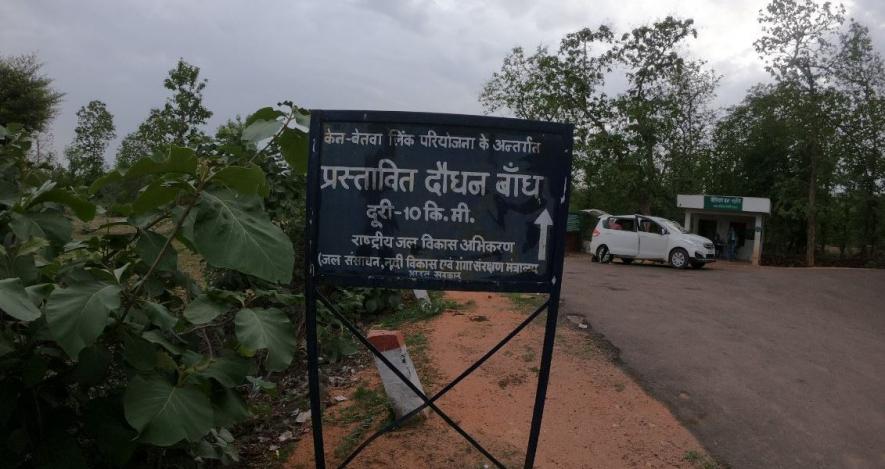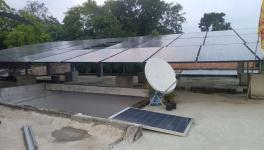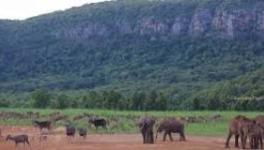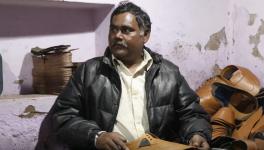Cabinet Approval of Ken Betwa Interlinking Project Creates Furore Among Conservationists

Image Courtesy: The Wire
Environmentalists and conservationists have slammed the Cabinet's recent approval of the Ken-Betwa river interlinking project as illegal. The project is aimed at resolving the water scarcity in the drought-prone belt of the Bundelkhand region across Uttar Pradesh and Madhya Pradesh. The detractors also see the development as a political move as the elections in Uttar Pradesh are round the corner.
A dam and a channel between the Ken and Betwa rivers will be constructed under the project, incurring Rs 44,605 crore. Daudhan dam will also be built on the Ken river inside the Panna Tiger Reserve in Madhya Pradesh.
Under the project, the water will be supplied from Ken to Betwa for irrigation on 10.62 lakh hectares of land and drinking water to around 62 lakh natives.
Himanshu Thakkar, a coordinator of the South Asia Network on Dams, Rivers, and People, told NewsClick, "The cabinet approval is illegal as the Supreme Court is yet to give its order based on the report of Central Empowered Committee (CEC) on this matter. Similarly, the petition concerning environment clearance is also pending before the National Green Tribunal."
The CEC report was submitted on August 30, 2019.
He said that the Forest Advisory Committee under the Ministry of Environment and Forest had raised a number of issues that are yet to be addressed.
"It is illegal to approve a project by the cabinet which is yet to get forest, environmental, and wildlife clearances."
It is to be noted here that CEC appointed by the Supreme Court rejected the wildlife clearance given by the Standing Committee of the National Board of Wildlife (SC-NBWL) to the project in 2016.
"The CEC members emphasised that the project overlooked more sustainable and more cost-effective alternatives. They also found the project economic infeasible given to its whopping cost," Thakkar said.
In its report, the CEC discussed submerging 6,017 hectares of forest land under Ken-Betwa Linking Project, resulting in a total loss of 10,500 hectares of wildlife habitat. This would disconnect the core critical tiger habitat of the Panna Tiger Reserve from the rest of the National Park.
The report also elaborated on the irreversible loss of a unique ecosystem with rich biodiversity in the region.
The CEC strongly pointed out that in granting the wildlife clearance to the KBLP, the SC-NBWL ignored the entire flora and fauna and unique ecosystem of the region. However, the project is very much located within the national core.
The report said that implementing the project would lead to total disruption of the evolutionary processes of millions of years within this unique ecosystem.
The proposed Daudhan dam will submerge an area of around 9,000 hectares of land, of which 5,803 hectares lies within the Panna Tiger Reserve. Around 6,017 hectares of forest land will be shorn of trees, of which 4,141 hectares lie within the sensitive core of the tiger reserve.
According to the report of a sub-committee of the Forest Advisory Committee, at least 23 lakh trees will need to be cut down to implement the Ken-Betwa Link Project.
Ravi Chopra, a well-known environmentalist and former director of People's Science Institute (PSI), said, "Being adjacent river basins, Ken is on the East and Betwa is on the west side. For the sheer reasons of their joint watersheds, both the basins experience the same weather pattern, like floods and drought around the same time. So this logic of Ken being a surplus basin and Betwa a deficit is mere hogwash."
He reasoned that despite the fact Betwa basin is a much bigger area than Ken, the latter has lesser demand for water for having large swathe of forests, lesser population, fewer industries and fewer urban pockets, which is projected as if the Ken has surplus water than Betwa which is not true.
Joanna Van Gruisen, a conservationist, told NewsClick, "Although today proponents most loudly claim that this will bring water to the drought-prone farmers of the Bundelkhand region, the DPR drought-project, states that "the main objective… is to make water available to deficit areas of upper Betwa basin…" It is a project of water substitution. The Environment Impact Assessment (EIA) confirms that it is primarily for "the water-scarce Raisen and Vidisha districts." Thus, in conception, it mainly looks to benefit areas outside Bundhelkhand, actually less "water-scarce" than its area of origin!"
She said, "Even the present Minister of State for Environment, Forest and Climate Change (Independent Charge) A M Dave does not seem wholly convinced as he has termed it "an experiment." He believes the Ken-Betwa link should go ahead and assess its impact on the environment after 5-10 years to see if others should go ahead. This is a strange view when such projects require an Environment Impact Assessment to assess this before the damage is done before a unique river system is irrevocably ruined."
Raghuvender Chundawat, a conservation biologist, told NewsClick that Ken Betwa Interlink Project blatantly flout the Wildlife Protection Act.
The Act states, "No person shall destroy, exploit or remove any wildlife including forest produce from a National Park or destroy or damage or divert the habitat of any wild animal by any act whatsoever or divert, stop or enhance the flow of water into or outside the National Park unless it is necessary for the improvement and better management of wildlife therein."
Chundawat lamented that when the world is seriously thinking of saving its forest and environment in the wake of drastic consequences triggered by climate change, India is doing the opposite.
Gruisen believes that if this project were to go ahead, it would be a disaster for what is already a small population of tigers, not to mention many other less iconic species from vultures to fish.
At the proposed level, the reservoir would effectively bi-furcate the park and give a crippling blow to all the effort that went into reviving the tiger population of Panna so successfully. It would be the destruction of a unique riverine system; even the NBWL report notes that this "riverine habitat is unique and cannot be replicated elsewhere."
Gruisen said Bundhelkhand covers areas of extreme water stress that require attention and amelioration. Therefore, it is particularly sad that inappropriate and impractical mega projects such as this divert attention and funds from the many practical and efficacious local solutions that could alleviate the people's woes in a fraction of the time and without the destruction.
Manoj Misra, head of Yamuna Jiye Abhiyan, is still hopeful that the project is likely to get revoked.
"First of all, we don't think that despite whatever has been declared or agreed, this project can go ahead as long as the case against NBWL's illegal clearance given to it remains sub judice at the Supreme Court. The report of the SC-created CEC is crystal clear in that the said wildlife clearance by NBWL was in violation of both Section 35 and 29 of the Wildlife (Protection) Act. So how can an illegal clearance be seen as good enough by any court or any government? A project should be legal before it can be assessed on its merits."
He further added that assuming that the heavens fall, it goes ahead willy nilly. The nation can say goodbye to the Panna Tiger Reserve as a safe haven for tigers and related biodiversity. It is the biggest such project in any National Park/Sanctuary. It shall open the floodgates to more such projects in other wildlife protected areas and defeat the very purpose for which these wild areas were set aside. Thirdly, It shall confirm that the MoEFCC, the National Tiger Conservation Authority (NTCA) and the Wildlife Institute of India (WII) are incapable of securing the welfare of India's wilderness areas and wildlife therein.
On the issue that the Centre intends to provide water to water-deficient areas of Bundelkhand through this project, he said that it is a blatant lie and just a political gimmick.
"Anyone with any real idea of the design of this project knows that it is a substitution project where whatever water is there in river Ken (already benefiting parts of Bundelkhand) shall be robbed and transferred to Betwa to enable the construction of more dams in the upper catchment of Betwa in regions away from Bundelkhand. This project shall actually take away Bundelkhand's water," he said.
"Yes, researchers like Prof. Brij Gopal and Prof. DK Marothia have already proved that much cheaper and faster measures to harvest and make Bundelkhand water-secure already exist. The CEC report also has alluded to this fact and said that viable alternatives to the project had not been explored," he added, "We are more than convinced that this project in its present form and design is destined to fail, gloriously and leave behind non-performing assets at enormous public cost. God forbid."
Get the latest reports & analysis with people's perspective on Protests, movements & deep analytical videos, discussions of the current affairs in your Telegram app. Subscribe to NewsClick's Telegram channel & get Real-Time updates on stories, as they get published on our website.
























